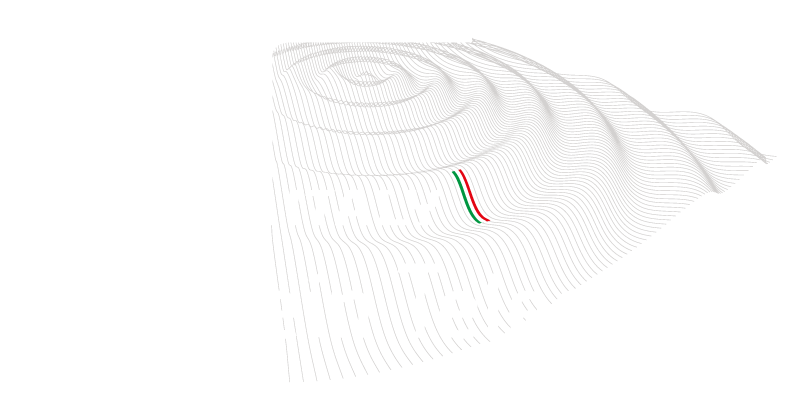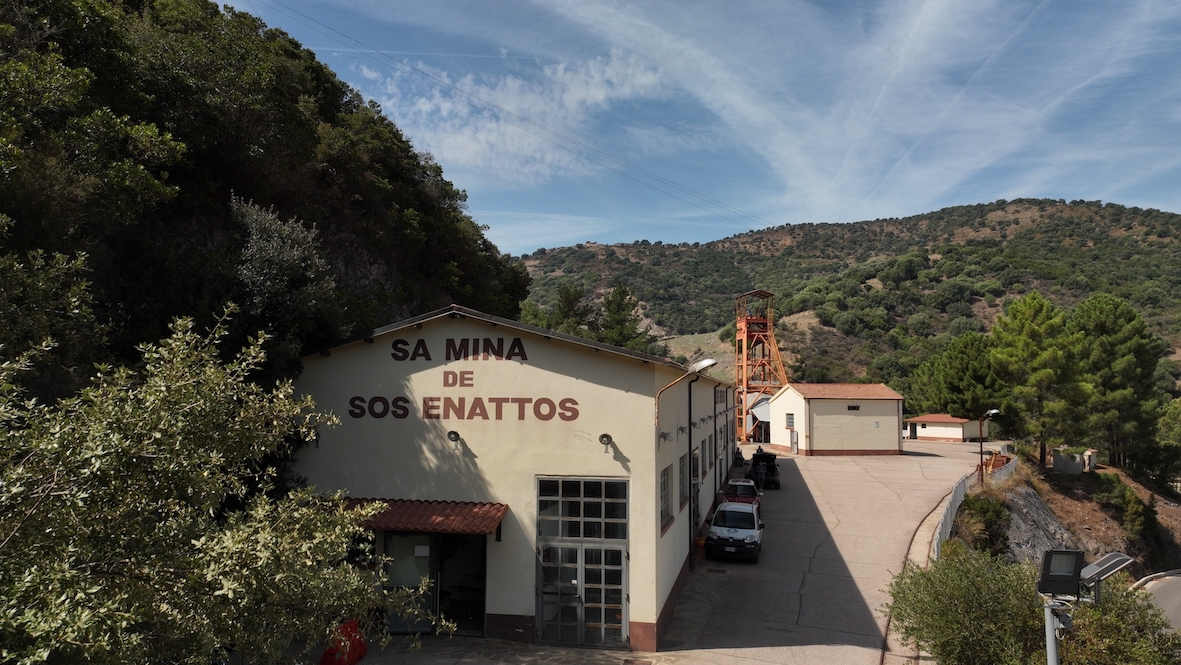28 September was the day of the first network connection dedicated to the innovative SAR-GRAV laboratory located in the area of the former Sos Enattos mine, in Lula (NU), Sardinia, Italy’s candidate site to house the future European large-scale research infrastructure for the study of gravitational waves, the Einstein Telescope. The work for connecting the site to the national research network was carried out under the terms of a convention between the University of Sassari, the lead partner of the SAR-GRAV project, and GARR, the Italian national network for universities and research, with funding provided by the Sardinia Region.
“This work underlines the efforts of the regional authorities to support scientific research and construct the large-scale infrastructure needed for its execution”, explains Giuseppe Fasolino, Sardinia Regional Planning Councillor. “The SAR-GRAV Project and the connection of the Sos Enattos site to the GARR network are clear evidence of our commitment to make Sardinia the perfect location for high-level research. This is a concrete sign of our unstinting support to the ongoing Italian process aimed at choosing our island to house the Einstein Telescope and it won’t be the last”, Fasolino adds.
“This next step, the result of synergy in the world of research and sound relations with regional and local institutions, once again puts local people and their environment at the heart of our initiatives,” stresses Gavino Mariotti, the Rector of the University of Sassari. “This powerful infrastructure paves the way for a digital transition, developed to adapt to the interior zones of the island. Once established, it will meet the typical needs of a complex scientific hub, like the Einstein Telescope, a third-generation gravitational wave detector. It will also help us meet social, cultural and economic needs that are linked to it and which may arise and develop in the future. Lastly, the digital highways which will facilitate the high-speed exchanging of data will form the basis of services in the future, including telemedicine, guaranteeing social fairness and sustainability in areas that are currently disadvantaged but open to innovation,” Mariotti concludes.
Thanks to 1 million Euro in regional funding, the SAR-GRAV laboratory, located in the former Sos Enattos mine, has been connected to the GARR national research network, by creating a long-circuit fibre-optic circuit dedicated exclusively to the laboratory, with an initial capacity of 1 Gbps.
“Connecting places such as the SAR-GRAV site is always exciting,” according to the director of the GARR, Claudia Battista, “because it showcases the role of the GARR in reaching and providing outstanding network performance even to locations far from the main population centres. The incredible natural silence of the location, from both a seismic and acoustic and electromagnetic perspective, thanks to the low population density and low level of industrialisation of the area, is the key advantage of the former Sos Enattos mine. This is what makes it unique scientifically. Reaching the site with a fibre-optic connection and enabling researchers to send large volumes of data across the world is a huge challenge but also an outstanding achievement. Sardinia is home to a number of research sites with very specific requirements and our goal is to provide latest-generation infrastructure interconnected with the national network and other global research networks”.
The new network connection will be the foundation for a strategic asset for research infrastructure to be housed in the Sos Enattos area – the only site of its kind in Europe. The connection will be managed by the INFN (National Nuclear Physics Institute), the lead partner of the scientific consortium backing the Einstein Telescope project. This intervention will make it possible to offer high-capacity connectivity to the SAR-GRAV laboratory, already a centre for fundamental physics research by the INFN and geophysics and geology research by the INGV (National Geophysics and Vulcanology Institute), vital for the selection of the site as a candidate.
“The SAR-GRAV laboratory represents the first high-tech element of the Einstein Telescope future large-scale scientific research infrastructure, which Italy has applied to host in the former Sos Enattos mine area. Connecting the SAR-GRAV laboratory to the GARR national research network is therefore a crucial step which will further bolster the candidacy of the site and is also an indication of the benefit in terms of progress and innovation that may be obtained from investments in research,” explains Alessandro Cardini, Director of the INFN Cagliari Division. “To ensure the success of the Italian bid, we must continue to work in synergy with scientific and political institutions. This is a unique opportunity for developing both Sardinia and Italy as a whole – an opportunity that we are ready, willing and able to seize”, Cardini concludes.
The SAR-GRAV laboratory project, launched in 2017 with funding of around 4 million Euro from the Sardinia Region, and coordinated by the University of Sassari, in cooperation with the INFN, INGV and the University of Cagliari, launched its first experiment, Archimedes, in 2022. Moreover, under the umbrella of the NRRP, the green light has been given to the FABER project, headed by the INGV and financed with some 2.5 million Euro. Its objective is to develop a seismological observatory over the next three years in Sos Enattos – the only one of its kind in the world. This other laboratory will also be of vital importance in supporting Italy’s bid to house the Einstein Telescope.
The connection of the Sos Enattos site forms part of a broader strategy of expanding and boosting connectivity for research institutes in Sardinia, which will be implemented using NRRP funds, thanks to the TeRABIT project. Launched in January and managed by the INFN and OGS (National Experimental Geophysics and Oceanography Institute), with the GARR and CINECA establishing the network infrastructure, the objective of TeRABIT is to construct a latest-generation fibre-optic in Sardinia dedicated to the research community, interconnected through under-sea fibre optic links to the GARR national network. The provision of regional fibre-optic infrastructure will further boost Sardinia’s profile by enabling direct interconnection to the system of global research networks for its research bodies and universities but also for international-level research infrastructures, such as the Sardinia Radio Telescope of the INAF (National Institute for Astrophysics) and the Sardinia Deep Space Antenna of the ASI (Italian Space Agency).
[Fotografia ©Antonio Varcasia_Università di Sassari]

